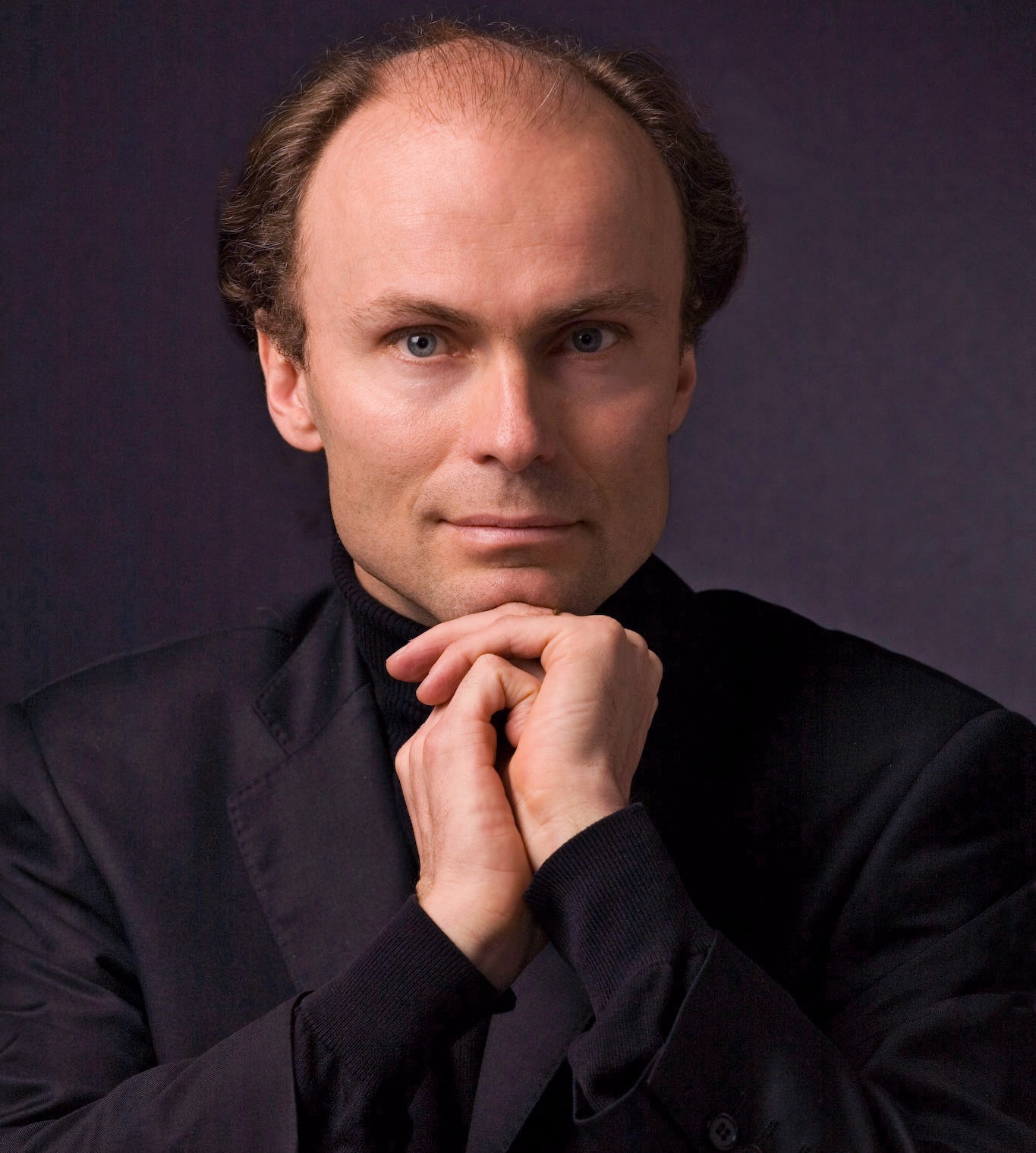 The SFEMS concert series continues the weekend of November 30, with the series debut of Cappella SF. The 16-voice choir will perform a program of sacred Renaissance polyphony, featuring works of Josquin des Préz, Gregorio Allegri, François Couperin, and Heinrich Schütz.
The SFEMS concert series continues the weekend of November 30, with the series debut of Cappella SF. The 16-voice choir will perform a program of sacred Renaissance polyphony, featuring works of Josquin des Préz, Gregorio Allegri, François Couperin, and Heinrich Schütz.
Cappella SF is a professional chamber choir founded in 2014 by Ragnar Bohlin, Director of the Grammy Award-winning San Francisco Symphony Chorus. The ensemble was created to bring the magic of a cappella music from all stylistic periods to the San Francisco Bay Area and beyond in performances at the highest artistic level. Members of the ensemble are veterans of the leading professional chorus groups of the San Francisco Bay Area, including Chanticleer, Philharmonia Baroque Chorale, American Bach Soloists and the choruses of San Francisco Symphony and San Francisco Opera. Bohlin’s roots in the San Francisco Symphony Chorus and in Swedish choral culture, including guest conducting with the Swedish Radio Choir, imbue the Cappella SF sound with amber luster, clarity and magical artistry. The ensemble has taken the choral world by storm in just four years, acclaimed both at home and abroad.
“Neither from Heaven nor from Earth” sweeps the listener post tenebras lux, from darkness before Advent, embodied by Josquin’s Miserere, through Allegri and Couperin, to the light of Christmas with Schütz’s great Exequien and Magnificat.
In the following notes, board member Cathleen Josaitis offers insight into the works on the program.
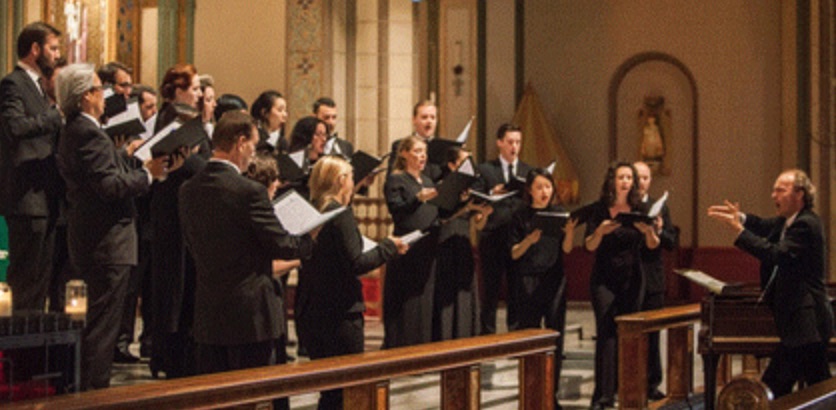
Martin Luther said of Josquin, “[the notes] must do as he wills; as for the other composers, they have to do as the notes will.” The Miserere mei Deus exemplifies the virtuosity with which Josquin produced works that were both mathematically precise and highly expressive, with many layers of meaning. Likely written in 1503–4 when he was at the court of Ferrara, this is the first known full-length setting of Psalm 51 (among the most penitential Psalms) and was a huge influence on 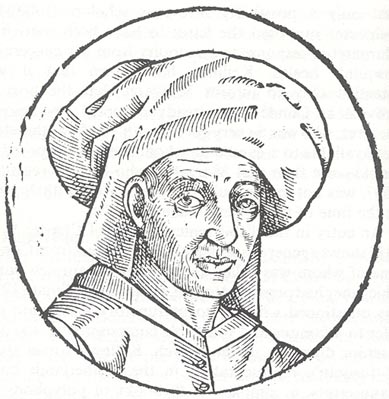 subsequent interpretations. Josquin’s setting is vast, spacious, and austere, in keeping with its intended liturgical use on Maundy Thursday after the altar is stripped bare in preparation for Good Friday. Its monumental 424-bar length was perhaps impractical for an actual service, but it may well have been so used in Ferrara, which was known for its focus on Holy Week. The piece is structured in three sections organized around a two-pitch ostinato cantus firmus phrase on the text “Miserere mei, Deus,” repeated 23 times by the tenor. The first section opens with the ostinato on E, with each repetition moving one note down the scale through the octave. The second section steps the ostinato back up the scale, but with halved note values. The third section takes the ostinato from E down to A, returning to full note values. The intervening 19 verses inventively and poignantly illuminate the text, often featuring the voice parts in paired duets. The overall effect is a meditation on the feelings of a man who is overwhelmed by his sins.
subsequent interpretations. Josquin’s setting is vast, spacious, and austere, in keeping with its intended liturgical use on Maundy Thursday after the altar is stripped bare in preparation for Good Friday. Its monumental 424-bar length was perhaps impractical for an actual service, but it may well have been so used in Ferrara, which was known for its focus on Holy Week. The piece is structured in three sections organized around a two-pitch ostinato cantus firmus phrase on the text “Miserere mei, Deus,” repeated 23 times by the tenor. The first section opens with the ostinato on E, with each repetition moving one note down the scale through the octave. The second section steps the ostinato back up the scale, but with halved note values. The third section takes the ostinato from E down to A, returning to full note values. The intervening 19 verses inventively and poignantly illuminate the text, often featuring the voice parts in paired duets. The overall effect is a meditation on the feelings of a man who is overwhelmed by his sins.
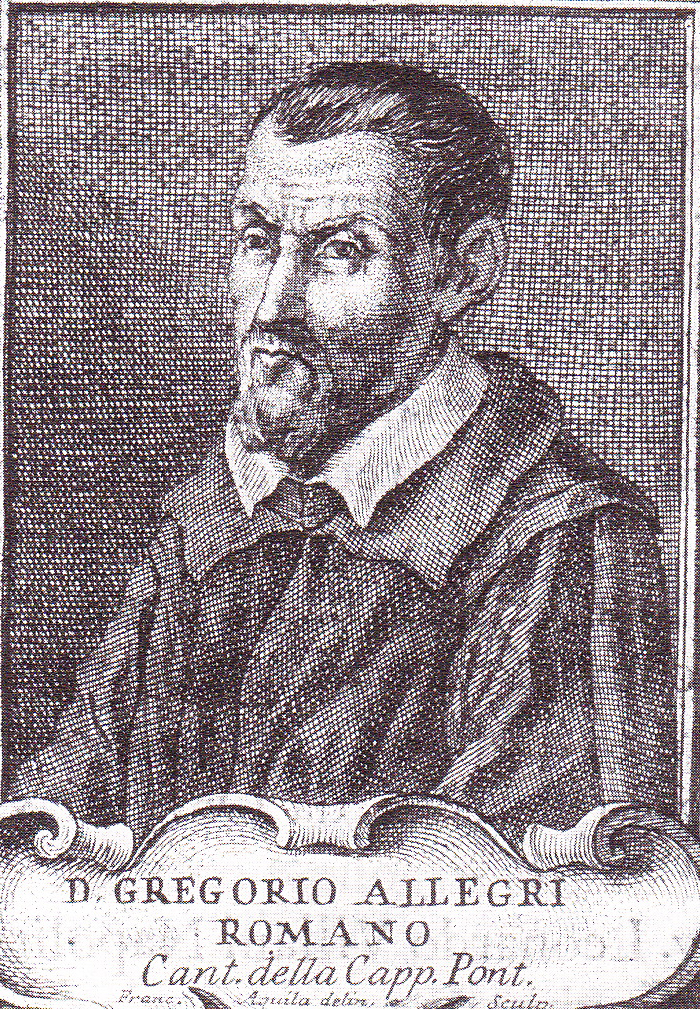 Allegri’s Miserere mei, Deus, along with Palestrina’s Missa Papae Marcelli, receives more performances around the world today than any other work of unaccompanied sacred music. It also has an especially convoluted history. The Miserere we are now familiar with probably bears little resemblance to the piece Allegri wrote for the Sistine Chapel Choir in 1638, when he was a singer there. As far as we can tell, Allegri’s original setting was sparse, with the singers being expected to ornament and embellish more floridly as the piece went on. The mystique surrounding the Miserere began when the Vatican forbade the piece from being written down, to enhance its exclusivity for Holy Week services at the Sistine Chapel. Singers passed down the ornamentations through the generations. This exclusivity was broken only when 14-year-old Mozart famously wrote out the score from memory, after a single hearing. Versions then proliferated. The magic of the piece arises from its many suspensions, and also from the embellishments of the simple vocal line, leading up to the extraordinary high C. The high C is very unlikely to have been written by Allegri, as it requires the bass line to leap an augmented fourth, creating a harmonic shift that would have been considered awkward and unacceptable in the era of its composition. Speculation is that the high C arose from a transcribing error by an editor of Grove’s Dictionary of Music, in which a segment of a nineteenth-century transcription one fourth higher than the original was inserted into a passage in the original lower key, for use as illustration in an article. The error was then passed on in later editions and made its way into performance. Whatever the cause, the result was the enchanting work we know today.
Allegri’s Miserere mei, Deus, along with Palestrina’s Missa Papae Marcelli, receives more performances around the world today than any other work of unaccompanied sacred music. It also has an especially convoluted history. The Miserere we are now familiar with probably bears little resemblance to the piece Allegri wrote for the Sistine Chapel Choir in 1638, when he was a singer there. As far as we can tell, Allegri’s original setting was sparse, with the singers being expected to ornament and embellish more floridly as the piece went on. The mystique surrounding the Miserere began when the Vatican forbade the piece from being written down, to enhance its exclusivity for Holy Week services at the Sistine Chapel. Singers passed down the ornamentations through the generations. This exclusivity was broken only when 14-year-old Mozart famously wrote out the score from memory, after a single hearing. Versions then proliferated. The magic of the piece arises from its many suspensions, and also from the embellishments of the simple vocal line, leading up to the extraordinary high C. The high C is very unlikely to have been written by Allegri, as it requires the bass line to leap an augmented fourth, creating a harmonic shift that would have been considered awkward and unacceptable in the era of its composition. Speculation is that the high C arose from a transcribing error by an editor of Grove’s Dictionary of Music, in which a segment of a nineteenth-century transcription one fourth higher than the original was inserted into a passage in the original lower key, for use as illustration in an article. The error was then passed on in later editions and made its way into performance. Whatever the cause, the result was the enchanting work we know today.
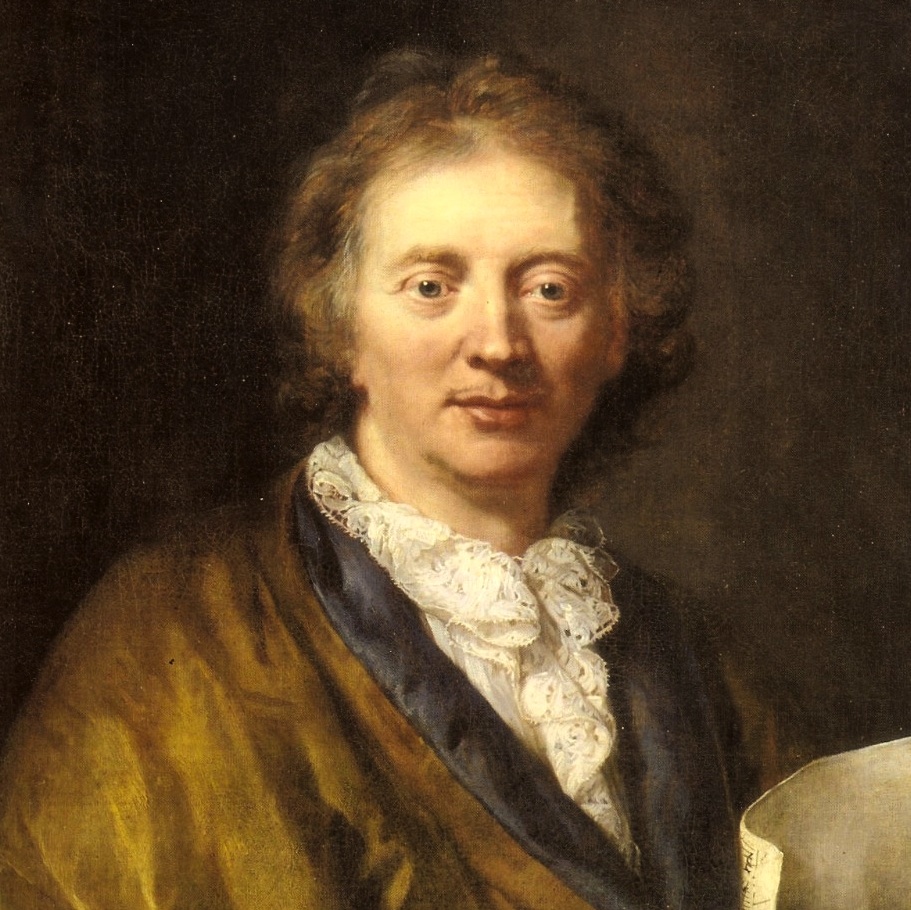 François Couperin is best known as a composer of keyboard music, having been harpsichordist to King Louis XIV and organist to the Chapelle Royale. However, his Troisième Leçon de ténèbres pour le mercredi saint, a sacred vocal work written in an intensely personal style that contrasts completely with the musical style favored in the Royal Court, is widely considered to be one of the pinnacles of baroque vocal music. The two vocal lines call for the performers to execute superb ornaments, a large variety of rhythms, and dissonances in free-form virtuosity, all in service of the text. Published in 1714 for the abbey at Longchamp near Paris, it is likely that excellent singers were available for Couperin, as it was fashionable for Paris opera goers to attend services at the abbey during Lent when the Paris Opera was closed. The piece is a setting of the Lamentations of Jeremiah, which contain some of the most desolate verses in the Old Testament. Jeremiah’s outcry at the devastation of Jerusalem during Nebuchadnezzar’s siege symbolizes (in the Catholic tradition) the loneliness of Christ after being abandoned by the Apostles. The text is part of the nine Tenebrae readings (“Leçons”) which occur during Holy Week (“pour le mercredi saint” refers to its intended use on Wednesday of Holy Week). Couperin set all nine readings, of which only three survive. Each verse begins with a letter of the Hebrew alphabet, set in an extended melisma (following the tradition of Renaissance settings of this text). The verses feature supremely expressive flights of the two voices, which evoke aspects of the “tragédie lyrique” style of Couperin’s time, to fuse spiritual devotion with a dramatic sensibility. The original vocal lines were for two solo sopranos. However, Couperin noted that “all other voice types may sing them.” Today, the women of Cappella SF will perform this work, with soloists on the verses and full chorus on the refrains.
François Couperin is best known as a composer of keyboard music, having been harpsichordist to King Louis XIV and organist to the Chapelle Royale. However, his Troisième Leçon de ténèbres pour le mercredi saint, a sacred vocal work written in an intensely personal style that contrasts completely with the musical style favored in the Royal Court, is widely considered to be one of the pinnacles of baroque vocal music. The two vocal lines call for the performers to execute superb ornaments, a large variety of rhythms, and dissonances in free-form virtuosity, all in service of the text. Published in 1714 for the abbey at Longchamp near Paris, it is likely that excellent singers were available for Couperin, as it was fashionable for Paris opera goers to attend services at the abbey during Lent when the Paris Opera was closed. The piece is a setting of the Lamentations of Jeremiah, which contain some of the most desolate verses in the Old Testament. Jeremiah’s outcry at the devastation of Jerusalem during Nebuchadnezzar’s siege symbolizes (in the Catholic tradition) the loneliness of Christ after being abandoned by the Apostles. The text is part of the nine Tenebrae readings (“Leçons”) which occur during Holy Week (“pour le mercredi saint” refers to its intended use on Wednesday of Holy Week). Couperin set all nine readings, of which only three survive. Each verse begins with a letter of the Hebrew alphabet, set in an extended melisma (following the tradition of Renaissance settings of this text). The verses feature supremely expressive flights of the two voices, which evoke aspects of the “tragédie lyrique” style of Couperin’s time, to fuse spiritual devotion with a dramatic sensibility. The original vocal lines were for two solo sopranos. However, Couperin noted that “all other voice types may sing them.” Today, the women of Cappella SF will perform this work, with soloists on the verses and full chorus on the refrains.
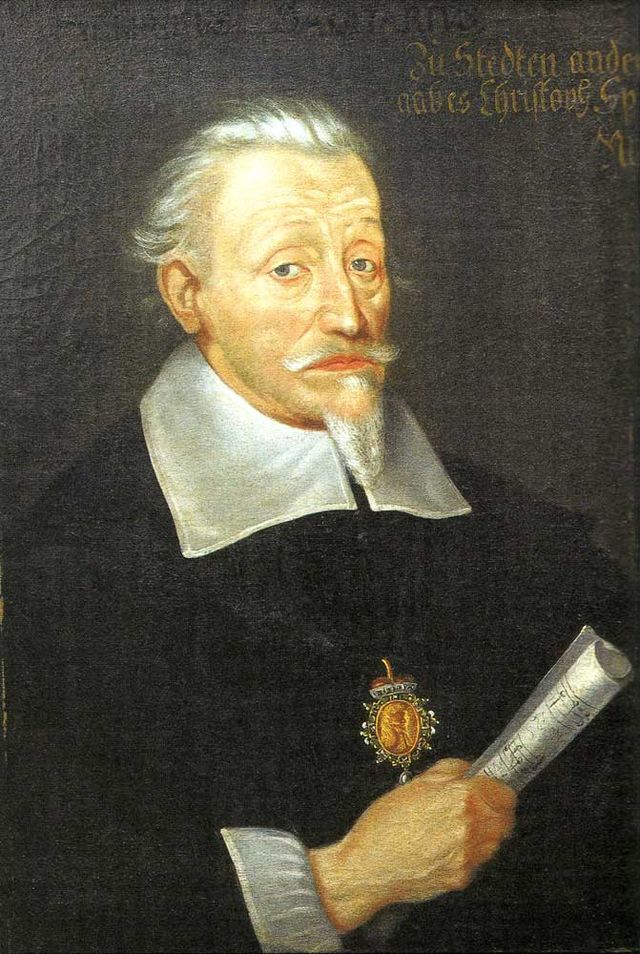
Heinrich Schütz is generally regarded as the most important German composer before Bach, Schütz drew on his studies with Gabrieli to introduce the warmth of the new Italian style (typified by Monteverdi) to strict German polyphony, while retaining a German sensibility. The Musikalische Exequien SWV 279–281 embodies this, being extremely individual in feeling, with effortless expression that exquisitely brings the German language to life. The piece was commissioned by Prince Heinrich II Posthumus von Reuss for his own elaborately-planned funeral, which occurred on February 4, 1636. To the 17th-century Lutheran mind, death was to be longed for as the culmination of a righteous life, so such a commission would not have been thought unusual. Heinrich II was a serious musician and accomplished singer, and a longtime friend and patron of Schütz. He chose the texts and shared his overall musical intentions with his friend, who sensitively realized the Prince’s wishes. The texts combine biblical passages and Lutheran liturgy, which leaven concern for man’s moral condition with reassurance and the hope of heaven. The first part (by far the largest) follows the general form of a Lutheran German Missa (Kyrie and Gloria only), with 6-part chorus alternating with soloists in various groupings. The second part is an 8-voice motet on the text chosen by Heinrich II for the funeral sermon. The third section is for 5-part chorus and a trio of soloists, ingeniously integrating the texts “Nunc dimittis” and “blessed are those who die in the name of the Lord…”. The spatial arrangement of the groups echoes the Venetian style. After the funeral, Musikalische Exequien was not performed again in the 17th century. Brahms owned a copy and may have been inspired by it in writing his Ein deutsches Requiem.
 Schütz composed the Deutsches Magnificat SWV 494 in 1669 at his retirement residence in Weißenfels, Germany, three years before his death at age 87. It is part of a much larger work consisting of an 11-movement setting of Psalm 119 (“Blessed are those whose ways are blameless…”), and Psalm 100 (“Make a joyful noise to the Lord…”). Collectively these works are titled Schwanengesang (Swan Song) and form a cycle of motets that Schütz intended to be his final musical testament, with the Magnificat as the very last piece. Touchingly, the manuscript bears the word FINIS in large letters in the composer’s hand, above the last line of the bass part of Choir II. The piece is a double SATB setting of Martin Luther’s translation of the Canticle of the Blessed Virgin Mary, “My soul magnifies the Lord….” In it, Mary responds to Elizabeth’s praise of her faithfulness with her own humble and grateful praise of God. The music beautifully evokes the reverent joy of the text, through chordal sections of radiant serenity that give way to graceful dance-like triple meter passages. It culminates in a startlingly unadorned Amen whose seemingly deliberate unpretentiousness may be an expression of the humility of Schütz’s faith. Unfortunately, the Magnificat was never performed during Schütz’s life nor at his funeral, and it fell into oblivion when the Elector of Saxony converted to Catholicism in 1697. The manuscript escaped destruction by wartime fire twice—once during the Prussian bombardment of the Electoral Palace of Saxony in 1760 and again during World War II, after which it became lost altogether. It was discovered uncatalogued at the Sächsische Landesbibliothek library in Dresden in 1975 and received its international premiere in 1985 for the 400th anniversary of Schütz’s birth. Today, it is one of his most popular works.
Schütz composed the Deutsches Magnificat SWV 494 in 1669 at his retirement residence in Weißenfels, Germany, three years before his death at age 87. It is part of a much larger work consisting of an 11-movement setting of Psalm 119 (“Blessed are those whose ways are blameless…”), and Psalm 100 (“Make a joyful noise to the Lord…”). Collectively these works are titled Schwanengesang (Swan Song) and form a cycle of motets that Schütz intended to be his final musical testament, with the Magnificat as the very last piece. Touchingly, the manuscript bears the word FINIS in large letters in the composer’s hand, above the last line of the bass part of Choir II. The piece is a double SATB setting of Martin Luther’s translation of the Canticle of the Blessed Virgin Mary, “My soul magnifies the Lord….” In it, Mary responds to Elizabeth’s praise of her faithfulness with her own humble and grateful praise of God. The music beautifully evokes the reverent joy of the text, through chordal sections of radiant serenity that give way to graceful dance-like triple meter passages. It culminates in a startlingly unadorned Amen whose seemingly deliberate unpretentiousness may be an expression of the humility of Schütz’s faith. Unfortunately, the Magnificat was never performed during Schütz’s life nor at his funeral, and it fell into oblivion when the Elector of Saxony converted to Catholicism in 1697. The manuscript escaped destruction by wartime fire twice—once during the Prussian bombardment of the Electoral Palace of Saxony in 1760 and again during World War II, after which it became lost altogether. It was discovered uncatalogued at the Sächsische Landesbibliothek library in Dresden in 1975 and received its international premiere in 1985 for the 400th anniversary of Schütz’s birth. Today, it is one of his most popular works.
* * *
Performances take place 8:00 p.m., Friday, Novembrer 30, at First Presbyterian Church, 1140 Cowper Street at Lincoln, in Palo Alto; 7:30 p.m. Saturday, December 1, at St. Mark’s Episcopal Church, 2300 Bancroft Way, in Berkeley; and 4:00 p.m. Sunday, December 2, at St. Mark’s Lutheran Church, 1111 O’Farrell at Gough, in San Francisco. Tickets are available online, through the SFEMS box office at 510-528-1725, or at the door 45 minutes before each performance.












